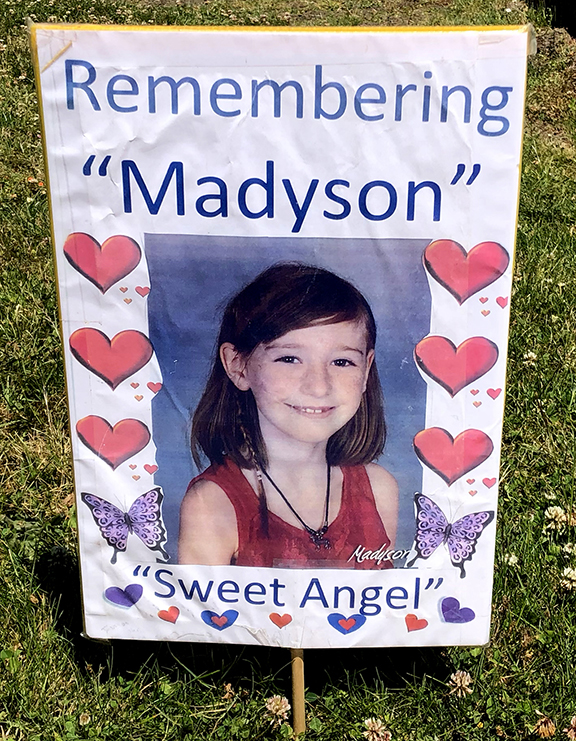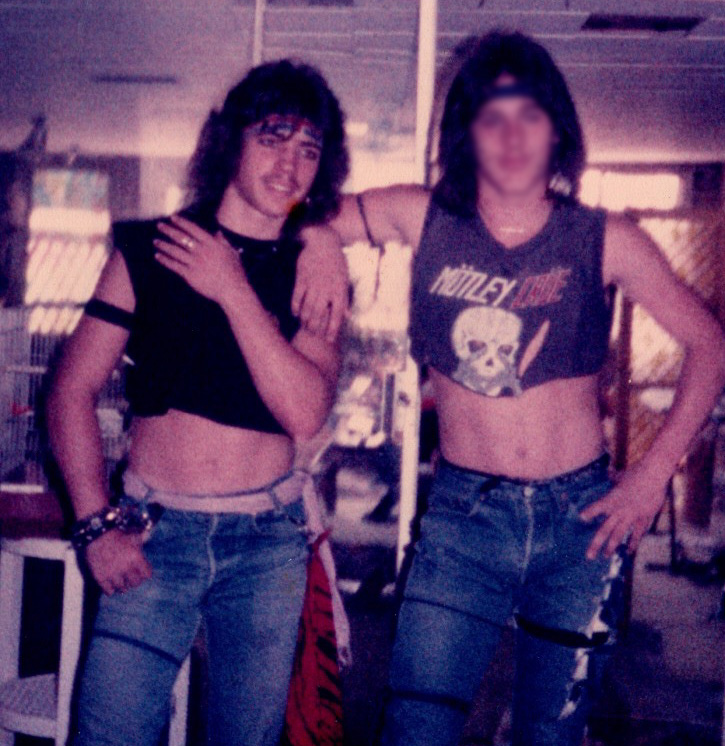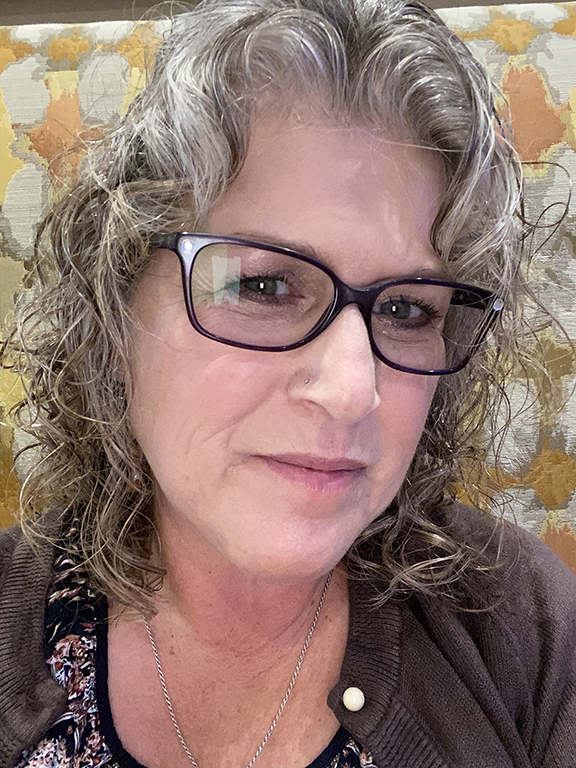Glassman outside the Berkeley clinic where he works | Photo by Julie Reynolds Martinez
| FEATURED
This is the first story in a two-part series co-published with The Imprint. Read part 2 here.
Corey Glassman was 16 years old when he murdered a fellow high school student for the money in her purse. His 26 years-to-life prison sentence coincided with a tough-on-crime approach to the nation’s justice system, including how children and youth were penalized under the law. But the changes he made that helped earn his freedom raise questions: How much do we as a society believe that violent young people are redeemable? Are they worth the risk of a second chance?
RELATED STORY: A Progressive Community Grapples With the Reality of Juvenile Justice Reform
By Julie Reynolds Martinez
Part one of two
Each weekday, Corey Glassman greets clients seeking help for drug addiction at an unassuming building in downtown Berkeley.
There are walk-ins and people with appointments, and these days, they all must be screened for symptoms of COVID-19 before Glassman, a certified substance use disorder counselor, can begin intake. His work as admissions manager at Options Recovery Services is rewarding but consuming, often tying him up after hours.
Back home at his modest, modular house, 51-year-old Glassman shares his life with his new wife, three cats and anything involving the San Francisco Giants. With a bachelor’s degree in sociology behind him, he is now applying to start a master’s degree in social work at San Jose State University. He’s the sort of gentle, affable soul anyone would welcome as a neighbor.
Yet decades ago, at age 16, Glassman committed one of the Bay Area’s most heinous murders. Glassman robbed and killed 18-year-old Junko Owaki — a Japanese exchange student who lived nearby. Parole commissioners described his crime as “atrocious,” “cruel” and “horrific,” court documents show.
At 17, Glassman was tried as an adult and given a life sentence. He believed he would die in prison, written off as irredeemable.
Acts of such brutality by teens are extremely rare. The number of violent crimes committed by juveniles has plunged for decades, and in 2018, reached the lowest level in more than 20 years, according to Justice Department records.
Yet since the 1990s, violent youth crimes have captured the most media attention and influenced legislation for decades: The 1994 federal crime bill allowed children as young as 13 to be prosecuted as adults. Six years later, with former President George Bush’s drug czar William Bennett calling out “brutally remorseless youngsters,” California’s Proposition 21 increased prison times for juvenile crimes and required teens 14 and older accused of murder to be tried in adult courts. For the first time, Proposition 21 gave California prosecutors, not judges, the right to decide if juveniles should be tried and sentenced as adults.
Can a young person change after committing a horrific crime and become less of a threat to public safety? Does society have the stomach to take on the challenge?<br />
Now, after decades of activism to overturn harsh sentences for juvenile offenders, there are growing signs of a willingness to reconsider how society judges and punishes young people who commit even the most violent of crimes. Most states have now lifted the automatic prosecution of teenagers as adults to age 18, with just three states still considering all 17-year-olds to be adults in the eyes of the law. Even a conservative state like Kentucky is backing off a law passed in the tough-on-crime 1990s, under which minors age 14 or older automatically faced adult felony charges if a firearm was involved in the crime. Democratic Gov. Andy Beshear signed Senate Bill 32 in March, giving judges the authority to decide whether a minor should be transferred to adult court or kept in juvenile proceedings.
“A growing body of research finds that people convicted of violent offenses do not ‘specialize’ in violence, and are not inherently dangerous people,” stated an analysis by the nonpartisan Prison Policy Initiative. Young people “age out” of violence, and violent criminals tend to have among the lowest recidivism rates, policy analyst Alexi Jones wrote in her 2020 paper, “Why states should stop excluding violent offenses from criminal justice reforms.”
These discussions are new. Sentencing reforms of the past have long focused on what the policy initiative calls the “non, non, nons” — state efforts focused almost entirely on people locked up for nonserious, nonviolent and nonsexual offenses, such as parole or probation violations.
Can a young person change after committing a horrific crime and become less of a threat to public safety? Should taxpayers and the general public be invested in trying to help them? Does society have the stomach to take on the challenge?
Those questions have been put to the test recently in progressive Santa Cruz County. The case of a 15-year-old boy accused of torturing, sexually assaulting and murdering 8-year-old Maddy Middleton in 2015 has been widely publicized through print and broadcast media. The accused, Adrian Gonzalez, has already appeared in adult court, where he faced a potential life sentence.

But in late February, reflecting an increasingly shifting approach to juvenile offenders, the California Supreme Court upheld a law protecting 14- and 15-year-olds from adult sentences. The ruling meant Gonzalez, now 21, would be sentenced as a juvenile.
Gonzalez soon changed his plea to guilty and in April was ordered to serve the maximum term in youth prison. His sentence will include treatment along with detention, and he will be eligible for release in less than four years.
Members of Maddy’s family have decried the law as a “one-size-fits-all approach” to juvenile justice. “This is wrong and lets an intentional, vicious murderer walk free,” they said in a statement last year, echoing victims’ rights advocates across the country.
Society can debate whether young teens who commit horrific crimes deserve rehabilitation or retribution. And it’s too soon to tell how Gonzalez’s life will unfold.
In Glassman’s case, interviews with his attorney, colleagues and former supervisors and a review of records show there is plenty of evidence that young people can — and do — change. Often, quite dramatically.
After six parole hearings, even the prosecutor stopped objecting to Glassman’s release. A prison psychiatrist reported he was no longer a threat to public safety, noting that he “accepted culpability and generally did not appear to trivialize, minimize his responsibility, or externalize blame.”
In a series of interviews with Voices in recent months, Glassman said he had to ask himself a lot of questions, draw on support from people around him, and become convinced his life could still be turned around and was worth the effort. Then, he said, he knew he was safe to be let out.
“I left Junko in a ditch and just walked away. And I just walked away from her for years,” Glassman recalled. “Part of the healing for me was essentially going back and picking her up, in a way that honors her through the decisions that I make, the goals I set, the people that I help. She is my greatest motivator for doing the right thing.”
***
Growing up in Fremont, Glassman had a “tumultuous childhood, including the unexpected death of his father, sexual abuse at the hands of a mentor and losing a close relationship with his stepfather,” appeals court records show.
As a teen, he had an exceptionally high IQ — 133, according to one corrections report. But he ran with a tough group of friends. Glassman started smoking weed and drinking at “11 or 12 years old,” court records show.
One day in 1986, Glassman learned that Owaki, a fellow high school student, had $2,200 cash in her purse, money her father had sent from overseas for car repairs.

In an Associated Press report, one of Owaki’s teachers called her “a free spirit,” who loved her time in America — relishing everything from art classes to her high school band and the readily available candy and ice cream she found herself surrounded by. In a notebook, she described herself as “An American girl who happened to be born in Japan.”
Glassman told his friend Gina Florio, 16, about the money. Court records state that Glassman looked up to Florio and desperately wanted to impress her. Florio “said she wanted to steal the money, but said that they would have to kill Ms. Owaki to avoid getting caught,” a report by then-California Gov. Jerry Brown stated, adding: “Mr. Glassman agreed.”
In a sign of how the teenagers’ young minds worked at the time, Glassman now describes his memory of that night as “a game of chicken that neither one of us would back down from.”
But according to court records, high on booze and drugs, the two lured Owaki through a field and tunnel until they reached a drainage ditch, where Florio handed a knife to Glassman. They slammed her head against a wall and stabbed her 99 times. Then they pushed her body into the drainage ditch, took her purse and fled.
Glassman said authorities didn’t find her body for nearly three weeks because heavy rains washed her almost to the San Francisco Bay. Someone in a passing train saw the body and reported it.
Owaki’s family could not be reached for comment, and courts and district attorneys do not share victims’ contact information out of respect for their privacy. The Alameda County District Attorney’s Office, which prosecuted Glassman’s case, declined to be interviewed for this story.
Florio and Glassman confessed after they were arrested, but both pleaded not guilty and went to separate trials in adult court. Florio got a 26-years-to-life sentence and was released two years before Glassman after serving 29 years.
At the time of Glassman’s jury trial in 1987, Californians were hardening their approach to juvenile justice. After a half-century of treating youthful offenders as children worthy of rehabilitation efforts, teens were increasingly being tried and sentenced as adults.
Glassman was convicted of first-degree murder with use of a deadly weapon and, like Florio, was given a life sentence with the possibility of parole after 26 years. He had barely turned 16 when he committed the crime and, due to his age, fell between two starkly different sentencing rules in effect at the time.
If he had been six months older — age 16 and a half — he would have faced the death penalty or life without possibility of parole.
At the time, if he had been just three months younger — age 15 — he would have been tried as a juvenile and sentenced to the Youth Authority, California’s prison system for teens and young adults that is closing down later this year. In that system, he could have been released before he turned 25.
Instead, Glassman would serve more than a quarter-century in adult prisons. Three months shy of his 18th birthday, he was shackled and put on a bus to San Quentin State Prison.
“I was a screwed-up kid in the worst way,” he said of those early years. If he had received the lighter sentence at the Youth Authority, he added, “by no means would I have killed somebody else.” But he described his younger self as manipulative and continuing “to make some really bad decisions.”
Asked about the Santa Cruz case and the state Supreme Court decision that now ensures 15-year-olds can’t go to adult prison, Glassman said it can’t be overlooked that there is “the absolute need for rehabilitation.”
As for Adrian Gonzalez’s fate, he said, “I hope this kid gets what he needs.”

***
In 1987, Glassman was the only teen on the yard. And despite the stereotype of youth who commit violent acts, he was terrified. The reality of what he had done and the prospect of spending his life in prison hadn’t yet sunk in.
“Everybody was an adult but me,” he said. “I was scared to death.”
One year later, across the country in Massachusetts, a run for president by then-Gov. Michael Dukakis was crushed by political opponents after a prisoner, Willie Horton, committed brutal crimes while on weekend parole. The parole program had been supported by Dukakis, and he would quickly pay the price. Horton’s case derailed his presidential run and drove the California Legislature in 1988 to grant governors the power to reverse parole board decisions in murder cases.
If Glassman had ever dreamed the parole board might set him free, that glimmer was quickly extinguished. While he was housed at Folsom State Prison near Sacramento, Glassman’s mother — his main contact with the outside world — could only visit every few months because the drive was more than five hours.
And by the 1990s, “politics turned against us,” Glassman said. “Everybody was ‘lock them up, throw away the key,’ and people inside lost hope every day.”
Still, gradually, he said he began to change his thinking. When he was moved to Corcoran State Prison, he cultivated “a really good, positive group of friends,” and his mother started coming once a month. Her life had improved, and she was in a stable, healthy marriage, which “helped me feel a little bit better about my family and the people that cared for me,” Glassman said. “My self-esteem started growing.”
Glassman also quit drinking and using drugs — no minor feat in California prisons, where cell-made hooch and drugs are rampant through underground channels. Once sober, the truth became apparent, he said: “I knew that I was the one that put myself here, and I realized that I was the one that was going to get myself out.”
One important step, he said, was facing the memory of being molested as a boy and working through the difficult emotions that brought up.
“For so many years I refused to feel,” he said. He didn’t speak about being molested until he was 40. It was too painful to share.
“My mom loved me. There are people that love me,” he said. But they couldn’t help him. “I had to do this. And so that was, for me, the biggest maturing realization.”
***
Over the years, Glassman moved through 10 different prisons, each with its own culture, hazards, and at times, small flickers of opportunity. In 2006, he volunteered to join a select group of prisoner-mentors leading counseling sessions at Pleasant Valley State Prison, and later he earned a certificate as a drug and alcohol treatment provider.
“It wasn’t about being a prisoner. It wasn’t about being in blue,” he said, referring to the prison scrubs he and his colleagues wore in the counseling program. He saw himself differently in those scrubs, as if wearing a new identity.
“They treated you like a person,” Glassman said, allowing him to “come from the heart, not the head.”
Melissa Edwards was one of the staff counselors Glassman worked with a couple of years later in the substance abuse program at the Correctional Training Facility in Soledad.
“He was the biggest surprise,” Edwards said in a recent interview. “Not because I didn’t think that he was true in his change, but just the amount of change that I’ve seen him make.”

Amid Glassman’s remorse, hope started peeking through. Then he saw an ad for a parole attorney named Charles Carbone, whom his family later hired. The ad said prisoners aiming for parole had to be as focused as if they were preparing for a PhD.
“I totally took that to heart,” Glassman said.
Despite his progress, the parole board denied Glassman’s bid for freedom five times over 10 years.
But in 2008, a new California law inspired by a vicious, high-profile crime led to sweeping changes that, again, may well have altered Glassman’s trajectory.
California’s Marsy’s Law, now mirrored in legislation across the country, was pushed by the billionaire brother of Marsy Ann Nicholas, a UC Santa Barbara student who was stalked and killed by her boyfriend. “Marsy’s Laws,” opposed by civil rights advocates as unconstitutional, grant victims’ families extensive rights to be involved in court cases. In California, the law can extend parole decisions for as many as 15 years.
Glassman’s fourth parole hearing landed in 2009, the year Marsy’s Law took effect in the state. He got a three-year denial. But in those early years, even Glassman says he probably shouldn’t have been released.
“There was definitely a number of years where I wasn’t ready. I can be honest about that,” he said. “Fortunately I had the support around me and the motivation to go and find those answers and make those final changes.”
Johnny Angel Martinez contributed to this story.
This is the first of a two-part series co-published with The Imprint. Part 2 will be published May 27.
Have something to say about this story? Send us a letter.